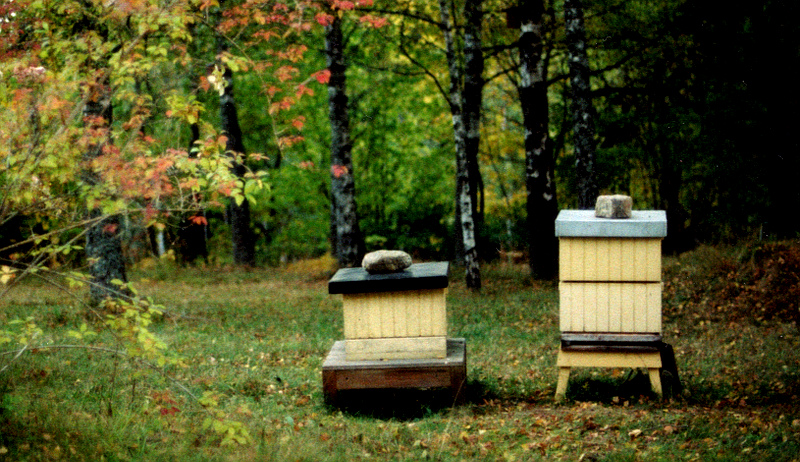
Having just traversed the autumnal equinox, the time is now for fall cleaning and winter preparation chores. Perhaps you live in a cooler part of the Northern Hemisphere, in which case, your yearly chores have already begun. Most of the rest of us beekeepers have some work yet to do in terms of fall maintenance.
Now that the foraging season is largely behind us and the honey has been harvested (or left for the bees), it’s time to tackle your fall maintenance chores. The bees are already several steps ahead of you: In fact, their winter preparation started with the first spring blooms, as they began gathering and storing nectar and pollen. So as we beekeepers take on our own chores, we are serving their interest and following their lead by doing whatever we can to give them a leg up for the coming winter months.
Here are a few ways we do that in the fall.
Protect Against Predators
A good fall maintenance task is keeping the physical hive safe from pesky animal intruders. Fall and winter find small mammals, such as mice and rats, looking for shelter from the winter winds. Beehives are notoriously attractive to these creatures, and having one as an inhabitant is particularly troubling—namely because they are terrible houseguests. Rats and mice will destroy comb, eat whatever they fancy, and urinate and defecate throughout the hive. Knowing how tidy and clean honeybees are, these conditions might force them to abscond at the worst time of year. Now is the time to take precautions: First check for intruders by doing a sweep of the bottom most super. Once clear, install metal mouse guards to the front entrance. One small chore means everyone sleeps well at night for the months to come.
Stabilize The Hive
The second fall maintenance task I advise is protecting your hive from wind and larger predators. If you’ve located your hives with a windbreak in mind, your bees are already ahead of the game. I like to take extra precautions for the winter as I live on a very windy mountainside—with many wild black bears roaming the woods. Strapping the supers together helps protect the winter cluster of bees within, should the hive be blown (or knocked) over.
Feed If You Need To
Feeding honeybees for fall maintenance or other reasons is a controversial topic among beekeepers, particularly those who practice holistically and organically. It’s worth doing your own research and some soul searching about your feelings on this topic. Whatever you decide, know that this is one of the last times to feed your bees if they are low on stores. Once it dips below 55 degrees Fahrenheit regularly, bees will be unable to leave their winter cluster to gather, process and store the liquid feed you provide, even if it’s honey.
Clean Up, Throw Out, Take Inventory
Fall is a wonderful time of year to organize your beekeeping equipment. Clean out old woodenware, throw out what is diseased or beyond repair,and make notes of what to purchase in the spring. Clean out honey harvesting equipment thoroughly, and store everything in a safe, dry place, away from potential predators and pests.
As a final fall maintenance task, and a farewell to the beekeeping year, look back at your beekeeping journal from the past season and reflect on successes and failures. What went well? What would you like to change? What did you enjoy about the last year? Where can you improve? Winter is a wonderful time to gather reading material and research new ways of beekeeping. Take the upcoming slower season to talk with others doing the same and share notes with fellow beekeepers. While our bees work tirelessly to keep warm all winter, we can take advantage of the time to learn how to better support them in the year ahead.




